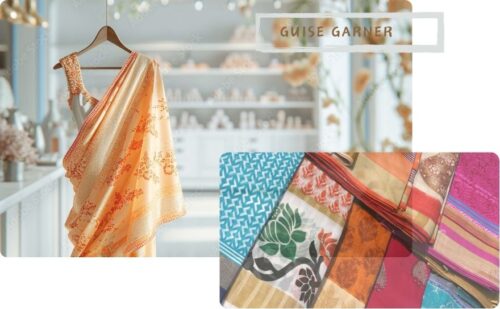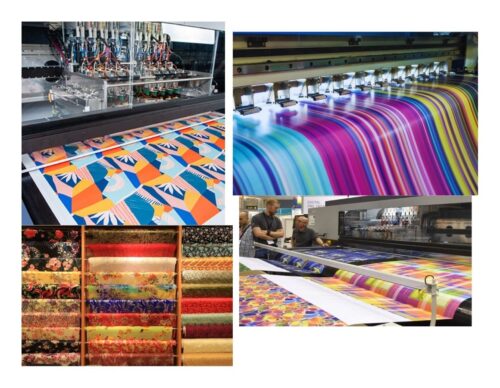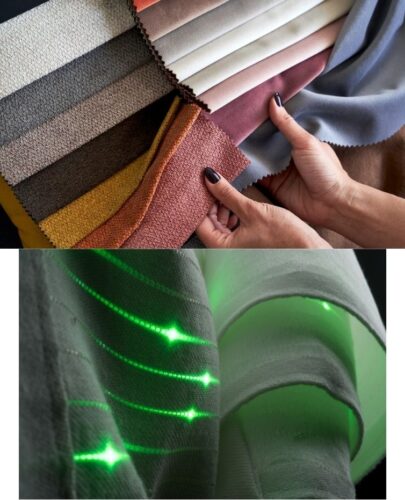Silk Guide: The History, Production, and Uses of this Luxurious Fabric
“Silk is not just a fabric; it is a testament to the delicate artistry of nature, weaving together beauty, elegance, and luxury in a single thread.”

Silk has long been considered a symbol of luxury, elegance, and refinement. This natural fiber, produced by silkworms, has captivated people for centuries with its softness, sheen, and durability. In this article, we will delve into the fascinating world of silk, exploring its history, production process, and various uses. Join us on this journey to discover the secrets of this remarkable fabric.
- The Origins of Silk
- The Silk Production Process
- Types of Silk
- How to Identify Pure Silk
- Silk in Fashion and Clothing
- Silk in Home Decor
- Silk in Art and Culture
- The Benefits of Silk
- Application of Silk
- Cosmetics:
- Caring for Silk
- Sustainable Silk Production
- The Future of Silk
- Market Cap And Price
- Where And How to Buy
- Conclusion
- FAQs
The Origins of Silk
Silk has a rich history that dates back over 5,000 years. Legend has it that the discovery of silk was made by the Chinese Empress Xi Ling-Shi. She accidentally dropped a silkworm cocoon into her tea, and as she tried to remove it, she noticed a fine thread unraveling. This serendipitous event led to the development of silk production in ancient China.
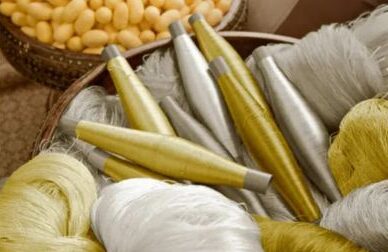
The Silk Production Process
The production of silk involves several intricate steps. It begins with the cultivation of silkworms, which feed on mulberry leaves. The silkworms then spin their cocoons using a single thread of silk, which can measure up to 900 meters in length. To obtain the silk, the cocoons are carefully unraveled, and the silk threads are harvested and spun into yarn.
Different Types of silk have different methods of making, weaving, quality, price and finishing.
Types of Silk
There are various types of silk available, each with its unique characteristics. Mulberry silk is the most common and widely produced type, known for its smooth texture and natural luster. Other types include Tussar silk, Eri silk, and Muga silk, which are derived from different species of silkworms and exhibit distinct properties. Also, Spider Silk, Sea Silk and Art Silk are nevertheless a form of making silk.
How to Identify Pure Silk
- Look for luster: Pure silk has a natural sheen when held under light.
- Perform a Wedding Ring Test: Yes, You got right, with the silk you plan to buy; gnuine, lightweight silk can be threaded through a wedding ring easily due to its flexibility and smoothness. Artificial silks scrunch up and cannot be pulled through.
- Check the texture: Silk feels smooth and soft to the touch.
- Inspect for irregularities: Pure silk may have slight imperfections, but there should be no obvious signs of uneven weaving or synthetic materials.
- Perform a burn test (with caution): Pure silk burns slowly, smells like burnt hair or feathers, and leaves a light, powdery ash.
- Consider price and source: Pure silk is generally more expensive, and reputable sellers can provide information about the fabric.
- Chemical Test: For accurate identification, opt for a Chemical Test. When in doubt, dissolve a small portion of the fabric in bleach. Genuine silk will dissolve, whereas fake silk will remain unaffected.
Consult an expert if unsure.
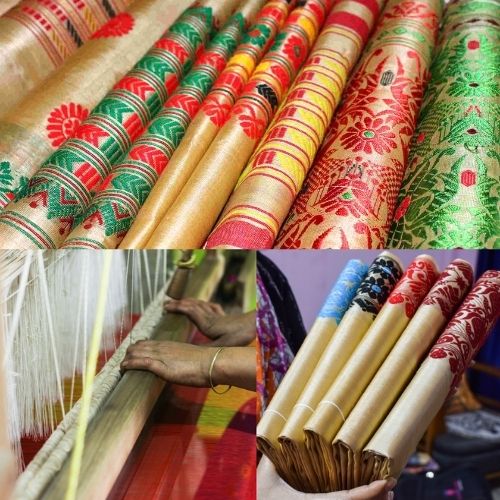
Silk in Fashion and Clothing
Silk has always been highly valued in the fashion industry. Its luxurious feel, vibrant colors, and ability to drape beautifully make it a favorite choice for designers. Silk garments, such as dresses, blouses, and scarves, exude elegance and sophistication. In India Silk is known for Silk sarees. The fabric’s breathability and moisture-wicking properties also contribute to its popularity in warm climates.
Silk in Home Decor
Silk adds a touch of elegance to home decor as well. Curtains, pillow covers, and beddings create a luxurious ambiance in bedrooms and living spaces. The fabric’s natural sheen and softness enhance the overall aesthetic appeal of a room, making it a popular choice for those seeking a sophisticated and refined interior design.
Silk in Art and Culture
Silk has played a significant role in various art forms and cultural traditions throughout history. Intricate silk tapestries, embroideries, and paintings have been cherished for their beauty and craftsmanship. In many cultures, silk garments are worn during special occasions and celebrations, symbolizing wealth, status, and cultural heritage.
The Benefits of Silk
Silk is a luxurious and versatile natural fiber that has been highly prized for thousands of years. It is produced by silkworms during the process of building their cocoons. Here are some of the benefits of silk:
- Soft and smooth texture: Silk has a unique softness and smoothness that feels luxurious against the skin. It is often described as having a sensual and gentle touch.
- Breathability: Silk is a highly breathable fabric, allowing air to circulate and moisture to evaporate. This makes it a comfortable choice for various climates and seasons. It can help regulate body temperature, keeping you cool in warm weather and warm in cooler conditions.
- Hypoallergenic properties: Silk is naturally hypoallergenic, which means it is unlikely to cause allergies or irritate sensitive skin. It is a great option for individuals with allergies or skin sensitivities.
- Moisture-wicking: Silk has excellent moisture-wicking properties, meaning it can absorb and draw away moisture from the body. This helps keep you dry and comfortable throughout the day and during sleep.
- Temperature regulation: Silk has the ability to adapt to your body temperature, providing a natural form of insulation. It helps keep you cool in hot weather by allowing excess heat to escape, and it retains warmth in colder temperatures.
- Hair and skin benefits: Silk’s smooth surface can minimize friction and reduce hair breakage, tangling, and frizz. It is also believed to be gentler on the skin compared to other fabrics, potentially reducing the appearance of wrinkles and promoting healthier-looking skin.
- All-season fabric: Due to its natural temperature-regulating properties, silk is suitable for all seasons. It keeps you cool in summer and warm in winter, making it a versatile choice for year-round comfort.
- Durability: Silk is known for its strength and durability, despite its delicate appearance. With proper care, silk garments can last for a long time, allowing you to enjoy the benefits of silk for years to come.
- Natural and sustainable: Silk is a natural fiber derived from the cocoons of silkworms. It is a renewable resource that can be harvested without causing harm to the silkworms. Additionally, silk production typically involves minimal chemical processing, making it a more sustainable choice compared to synthetic materials.
- Lightweight and comfortable: Silk is known for its lightweight nature, which makes it comfortable to wear. It has a delicate, airy feel that allows for freedom of movement and reduces any sense of heaviness.
- Anti-static properties: Silk tends to generate less static electricity compared to synthetic fabrics. This means that it is less likely to cling to your body or create static-related discomfort.
- UV protection: Silk has natural UV-blocking properties, offering some protection against harmful sun rays. While it is not a substitute for sunscreen, wearing silk can provide an additional layer of defense against sun damage.
- Versatility: Silk is a versatile fabric that can be used in various applications. It is commonly used in clothing, including dresses, blouses, scarves, and ties. Silk is also used in bedding, pillowcases, drapes, and upholstery, adding a touch of elegance to any setting.
- Natural sheen: Silk has a beautiful, natural sheen that enhances its luxurious appearance. The way it reflects light gives silk a lustrous and radiant quality, making it an appealing choice for special occasions and formal attire.
- Odor resistance: Silk has inherent odor-resistant properties, meaning it is less likely to retain unpleasant smells. This can be particularly beneficial for garments that are worn for extended periods or in warm climates.
- Eco-friendly dyeing: Silk can be easily dyed using natural, plant-based dyes, reducing the need for harsh chemicals. This eco-friendly dyeing process minimizes environmental impact and ensures that silk remains a sustainable choice.
- Allergen resistance: Silk is less prone to attracting dust mites and other common allergens, making it a favorable option for individuals with allergies or asthma. Its natural resistance to allergens can contribute to a healthier living environment.
- Biodegradability: Silk is a biodegradable material that breaks down naturally over time. This means that when silk products reach the end of their life cycle, they do not contribute to long-term environmental pollution.
These additional benefits highlight the many qualities that make silk a sought-after fabric across various industries. From its comfort and elegance to its eco-friendliness and durability, silk continues to be a timeless choice.
Application of Silk
Sure! The different fields of silk application refer to the various areas where silk is used for different purposes. Silk, a natural protein fiber produced by certain insects, particularly silkworms, has been valued for its softness, strength, and lustrous appearance for centuries. Here are some key fields where silk finds applications:
Textiles and Apparel:
Silk is widely used in the textile industry to create luxurious and high-quality fabrics for clothing, scarves, ties, and other fashion accessories.
Home Furnishings:
Silk is used in home decor items like curtains, pillow covers, beddings, and upholstery due to its elegance and smooth texture.
Medical Applications:
Silk has biomedical applications, including sutures and tissue engineering. Its biocompatibility and strength make it suitable for medical use. In medical applications, silk derived from the domesticated silkworm species Bombyx mori is predominantly used. This type of silk, commonly known as mulberry silk, is widely cultivated for commercial silk production and has been extensively studied and utilized in the medical field. Mulberry silk is valued for its fine texture, strength, and biocompatibility, making it suitable for various medical applications.
In the medical field, silk has several applications due to its unique properties. Here are some key uses of silk in medical terms:
- Sutures: Silk is commonly used as a material for surgical sutures. The biocompatibility and strength of silk make it suitable for stitching wounds and promoting proper healing.
- Tissue Engineering: Silk proteins can be processed into scaffolds that support the growth of cells and tissues. These silk-based scaffolds are used in tissue engineering to repair or regenerate damaged tissues and organs.
- Drug Delivery: Silk nanoparticles and microparticles can be engineered to encapsulate and deliver drugs to specific sites in the body. This controlled drug release system has potential applications in targeted therapies and sustained drug delivery.
- Wound Dressings: Silk-based materials are used in the development of advanced wound dressings. These dressings promote wound healing, provide a barrier against infection, and create a favorable environment for tissue regeneration.
- Surgical Meshes: Silk meshes are used as implants for hernia repair and in other surgical procedures that require the reinforcement of weakened or damaged tissues.
- Tissue Adhesives: Silk-based adhesives are being explored for their potential in wound closure and tissue bonding. These adhesives have adhesive properties and can seal wounds effectively.
- Biomedical Sensors: Silk-based materials are used to create flexible and biocompatible sensors for monitoring various physiological parameters, such as temperature, pressure, and pH levels.
- Ophthalmology: Silk-based materials have applications in ophthalmology, including the development of contact lenses, intraocular lenses, and corneal implants.
- Dental Applications: Silk-based materials are being studied for their potential in dental applications, such as scaffolds for tissue regeneration, drug delivery systems, and coatings for dental implants.
- Nerve Regeneration: Silk-based nerve conduits are used in nerve regeneration procedures. These conduits provide structural support and guidance for nerve regrowth in cases of nerve damage or injury.
These are some of the ways silk is utilized in medical applications, highlighting its versatility and potential in various healthcare areas.
Cosmetics:
Silk proteins are used in cosmetics and personal care products like shampoos, conditioners, and moisturizers due to their ability to enhance hair and skin health. In the cosmetic industry, various types of silk are used for their beneficial properties. Here are some commonly utilized silk types in cosmetic applications:
- Silk Protein: Silk proteins are extracted from silk fibers and used in cosmetic formulations. These proteins have moisturizing and conditioning properties, which help to improve the texture and appearance of skin and hair. They are often found in shampoos, conditioners, moisturizers, and hair treatments.
- Silk Peptides: Silk peptides are smaller fragments of silk proteins that can penetrate the skin more easily. They are known for their antioxidant and anti-aging properties, promoting collagen production and improving skin elasticity. Silk peptides are commonly found in anti-aging creams, serums, and facial masks.
- Silk Amino Acids: Silk amino acids are hydrolyzed silk proteins that provide nourishment and hydration to the skin and hair. They help to strengthen hair strands, enhance shine, and improve the overall health of the hair. In skincare products, silk amino acids can provide moisture and enhance the skin’s natural barrier function.
- Silk Powder: Silk powder is finely ground silk fibers that are used in cosmetic formulations to provide a smooth and silky texture. It can absorb excess oil on the skin, making it suitable for products like face powders, foundations, and mattifying primers.
- Silk Fibroin: Silk fibroin is a natural protein extracted from silk fibers. It has excellent moisture retention properties and helps to improve skin hydration. Silk fibroin is used in moisturizers, lotions, and serums to provide deep hydration and nourishment to the skin.
Sericulture:
Sericulture is the practice of cultivating silkworms for the production of silk. This field involves the breeding, rearing, and management of silkworms.
Art and Craft:
Silk is used in various art forms like painting, embroidery, and tapestry due to its smooth surface and ability to hold dyes well.
High-End Accessories:
Silk is used in the production of luxury accessories such as silk handbags, wallets, and luxury watch straps.
Industrial Applications:
Silk fibers are used in some specialized industrial applications, such as optical fibers and high-performance materials.
Filtration:
Silk-based materials have been used in filtration applications due to their ability to trap and remove particles.
Music Instruments:
Silk has been used historically in some musical instruments like strings for violins and other string instruments.
These are just some of the diverse fields where silk finds applications, showcasing its versatility and value in various industries.
Caring for Silk
To ensure the longevity of silk garments and products, proper care is essential. Here what you can do :
- Silk should be hand-washed with cold water or dry-cleaned to avoid damage.
- It is advisable to use mild detergents specifically designed for delicate fabrics.
- Avoid exposing silk to direct sunlight and avoid dryer for prolonged periods to prevent fading.
- Avoid ironing a wet silk, use a cotton fabric over it and iron on the lowest temprature.
- For long-term storage of silk items, use breathable plastic and include a moth repellant to prevent damage.
With the right care, silk can maintain its beauty and quality for years to come.
Sustainable Silk Production
In recent years, there has been a growing focus on sustainable and ethical practices in silk production. Sustainable silk aims to minimize the environmental impact by utilizing eco-friendly farming techniques and reducing chemical usage. Additionally, fair trade initiatives ensure fair wages and safe working conditions for silk farmers and workers.
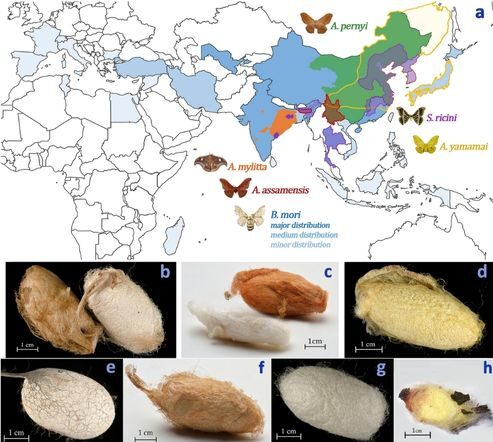
The Future of Silk
As technology advances, new possibilities for silk production and innovation emerge. Researchers are exploring ways to create synthetic silk using bioengineering techniques, offering a cruelty-free and sustainable alternative. The integration of smart textiles and nanotechnology into silk fabrics opens up exciting prospects for the future, such as self-cleaning and temperature-regulating properties.
Market Cap And Price
The price of silk can vary depending on various factors such as the type of silk, quality, manufacturing process, country of origin, and market demand. The cost of raw silk, also known as silk yarn or silk filament, can range from around $10 to $30 per ounce, depending on factors such as the type of silk (e.g., mulberry silk, tussar silk etc), quality, and sourcing.
The price of silk fabric ranged from around $15 to $200 per yard, depending on the factors mentioned above.
| country | Silk Production (in metric tons) | Value |
|---|---|---|
| China | 150,000 | $3,500 million |
| India | 28,708 | $800 million |
| Italy | – | $500 million |
| Japan | – | $400 million |
| France | – | $300 million |
| Thailand | 450 | $200 million |
| Brazil | 350 | $150 million |
| South Korea | 200 | $120 million |
| Uzbekistan | 1,300 | $100 million |
| Vietnam | 300 | $80 million |
| Other Countries | – | $750 million |
Please note that some countries may not have available data for either silk production or market value, indicated by a hyphen (-) in the table. Additionally, the market value figures are approximate and can vary depending on market conditions and currency exchange rates.
Where And How to Buy
There are several places where you can buy silk:
- Online Marketplaces: Websites like Amazon, eBay, and Etsy offer a wide range of silk products from various sellers around the world. You can browse through different options, compare prices, and read customer reviews before making a purchase.
- Specialty Silk Stores: Many cities have specialty stores dedicated to selling silk products. These stores may offer a broader selection of silk fabrics, clothing, accessories, and home decor items. Look for local silk stores or textile shops in your area.
- Fashion and Department Stores: High-end fashion boutiques and department stores often carry silk garments and accessories. Explore stores known for their luxury or designer collections, as they are more likely to offer a range of silk products.
- Silk-producing Countries: If you have the opportunity to travel to countries renowned for silk production, such as China, India, Thailand, or Italy, you can visit local markets, silk villages, or specialized silk shops to purchase authentic silk products directly from the source.
- Online Silk Retailers: There are online retailers that specialize in selling silk products. These retailers often have a wide range of options, including silk clothing, bedding, accessories, and fabrics. Some well-known online silk retailers include Silk Road Tees, LilySilk, and The Ethical Silk Company. Online platforms like Alibaba, eBay, or Etsy may have sellers offering raw silk as well directly or connecting you with silk producers.
When purchasing silk, it’s essential to clarify the specific type and grade of silk you need. Remember to check product descriptions, reviews, and return policies before making a purchase to ensure the quality and authenticity of the silk products.
Conclusion
Silk continues to captivate us with its timeless beauty and versatility. From ancient civilizations to modern-day fashion runways, silk remains a symbol of elegance and luxury. Whether adorning our bodies, homes, or works of art, silk adds a touch of sophistication and refinement to our lives. As we embrace sustainable practices and technological advancements, the future of silk holds endless possibilities, ensuring this remarkable fabric will continue to weave its way into our hearts.
FAQs
1. Is silk only produced in China?
A. While China is renowned for its silk production, silk is also produced in other countries such as India, Japan, Italy, and Thailand.
2. Can silk be washed in a washing machine?
A. Silk is a delicate fabric and should ideally be hand-washed or dry-cleaned to maintain its quality. Washing it in a machine may cause damage or shrinkage.
3. Is silk suitable for all seasons?
A. Yes, silk has natural temperature-regulating properties, keeping you cool in summer and warm in winter, making it suitable for year-round use.
4. Can silk be dyed in different colors?
A. Yes, silk can be dyed in a wide range of colors, thanks to its ability to absorb and retain dyes effectively.
5. Is silk an eco-friendly fabric?
A. Silk production can be eco-friendly when sustainable farming practices and ethical standards are employed. Look for certifications like “organic silk” or “peace silk” to ensure a more sustainable choice.

